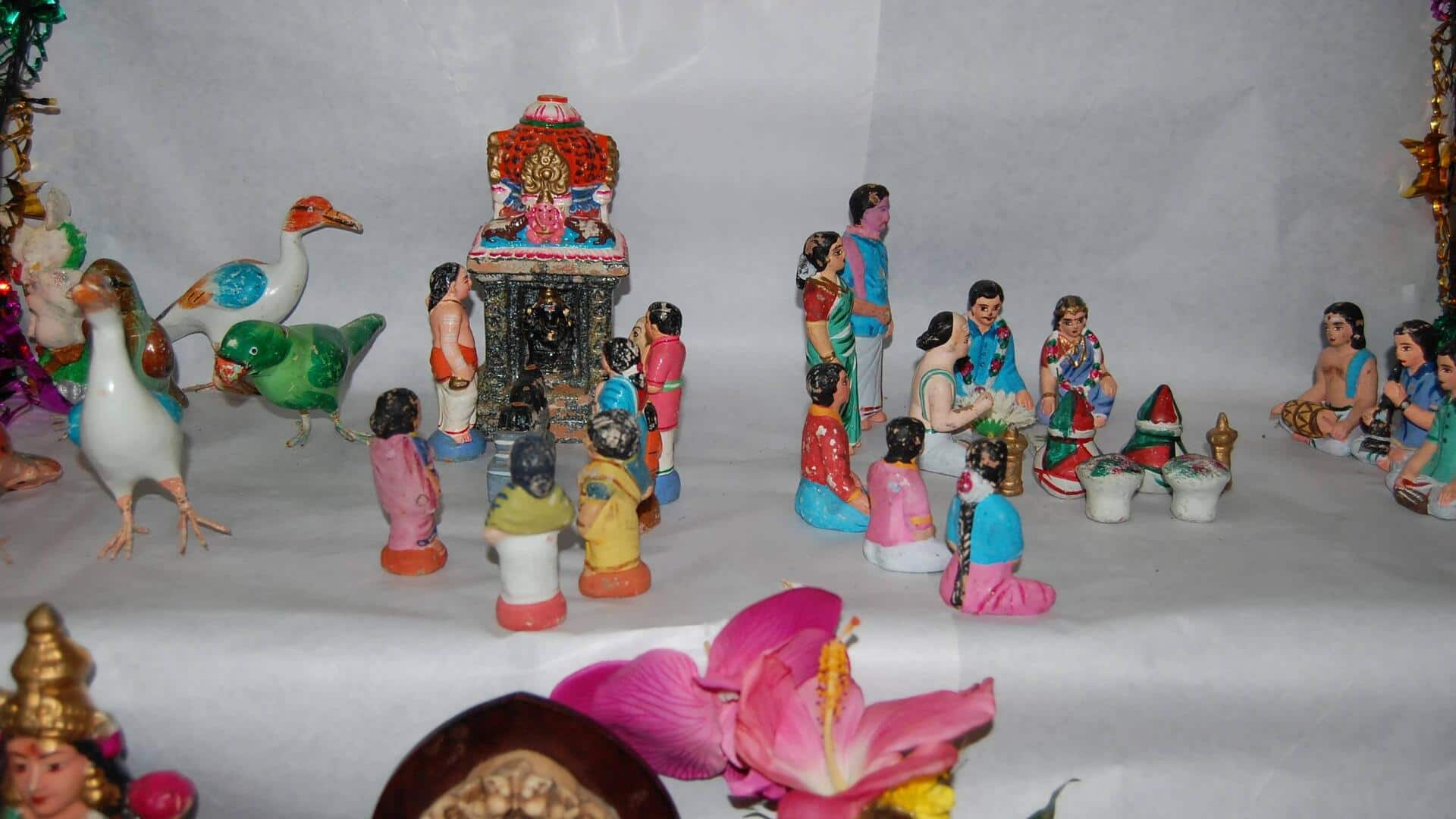Golu: The Navratri tradition of figurines and dolls
What's the story
One of the most captivating and cherished traditions during Navratri is the display of 'golu dolls' or Navratri golus seen commonly in South Indian homes.
These are essentially decorated displays of dolls and figurines placed on a set of steps called Kolu.
It is also known as Bommai Golu in Tamil, Bommala Koluvu in Telugu, and Bombe Habba in Kannada.
Significance
Significance of golus
The Navratri golu portrays episodes from antiquity, including well-known Indian tales including Ramayana, Puranas, and Dashavataram that have been passed down for generations.
The steps could also be seen as the evolutionary ladder that each of us must climb to progress through life.
Additionally, the golu also depicts the evolution of life — from animals to sages and seers.
Arrangement
Golu arrangement
The arrangements include setting up steps, laying a decorative cloth on it and placing the dolls and figurines of various gods, goddesses, animals, men, and children on it.
The dolls must be arranged in odd numbers of steps, such as three, nine, or eleven, depending on the number of golus.
Many households set nine steps, one for each of the nine days of Navratri.
Decoration
Decorating the steps
There is a ceremonial jar (kalash) on the first step. A coconut is placed on top of the water-filled jar with mango leaves underneath it. This represents Goddess Durga.
Wooden idols (Marapachi Bommai) of Saraswati, Laxmi, and Durga, are to be kept on the steps.
The human figures involved in various activities are placed on the lowest steps.
Traditions
Traditions around golus
The assembly of dolls is worshipped twice a day, and the Navratri golu can be kept for three to nine days.
Typically, women greet other women at the golu setup, inviting them and showing them respect with gifts of betel leaves, fruits, coconuts, flowers, bangles, turmeric, kumkum (vermilion powder), and prasad (a sacred offering of food prepared for the Divine and shared with others).
